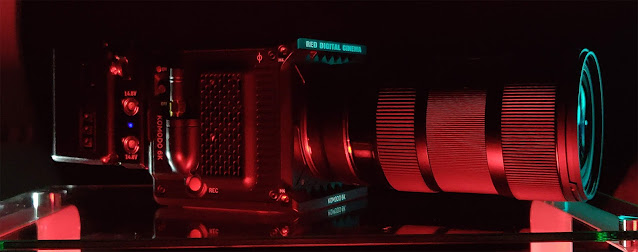Having come up as an AC, I make sure that the accessories are ones that work well, even if they cost a little more than the competitors. So I've ended up testing out a few different components before settling on my current kit. It's not worth the frustration of dealing with a sub-par piece of kit just to save a few bucks.
CURRENT KIT:
RED Komodo
(4) 256GB ProGrade CFast2 cards
Angelbird CFast2 reader
(4) BlueShape BP-955 batteries and charger
(2) Bebob Micro 98Wh Gold Mount batteries and charger
(2) Core SWX Nano 98Wh Gold Mount batteries and charger
Tilta Gold Mount adapter
Core SWX Gold mount adapter
Canon RF to EF adapter
Hot Rod Camera RF to PL adapter
Kondor Blue cage
Kondor Blue 15mm lightweight bridgeplate and 12" dovetail
Smallrig 16" 15mm iris rods
SmallRig wooden hand grips
SmallRig shoulder pad with dovetail
Bright Tangerine Misfit Atom matte box
Arri LMB matte box
Formatt-Hitech Firecrest Ultra Cine Superslim IRND set (ND 0.3-2.1)
Sigma 18-35mm F1.8 EF mount lens
Tilta Nucleus-M two motor follow focus
SmallHD DP7 Pro monitor
Portview BM5 iii WR 5.5" high bright monitor
Manfrotto 509HD head on Manfrotto 536 carbon fiber sticks
DJI Ronin RS 2 Pro
DJI Ronin 2













